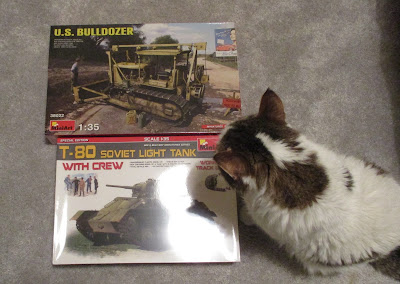Although a bit sparse on entries over the last few days progress is being made on My Last Great Project with further battles at the WMD HQ garage/Room of Gloom between me and various bits of wood that just do not want to go together. The good news is that I have the basics of the 'trolley' that the layout will sit on in my Man Cave. The idea is that I can easily move the layout around to access all sides. As I talked about in a previous post I am not getting younger and I really do not want to have to duck down to get into a central operating well and I don't want a lifting flap with the issues that can cause so whilst it has compromises this trolley idea works for me - well at the moment at least! The trolley castors are rated for 55kg each so should be up to the job which is good as I want to put a shelf on the lowest level for storage.
Meanwhile back at the WMD HQ garage/Room of Gloom those geometry lessons all those years ago suddenly came in useful! I did not want a straight end to the baseboard, more of a curve and this is what I came up with.
The picture makes it look a little distorted but in essence there is a 2 foot radius 'curve' on each side. Lots of head scratching, lots of cutting, lots of bits of wood ending up in the firewood pile but eventually it all got there without to much in the way of force to make things join! Still more to do and probably several more days until the four sections of baseboard are complete.
Moving onto the 009 gauge layout there has been some progress made. In brief the dummy point levers and the buffer stops have been installed, the quarry siding has been 'toned' into its surroundings and a scrap pile and wood pile have appeared as well as some additional fauna.
First off the dummy point levers needed to be set into the scenery so a bit of ballast and landscaping had to be removed to reveal the baseboard surface onto which the lever was glued. Luckily the damage caused to the ballast and landscaping was minimal so little in the way of repair was needed. I must be getting good at this!
Having left some of the original plaster mix to set in the tub I mixed it in, I used this to tone down the ballast in the siding to give the effect that the quarry material had spilled onto the track over the years. The hardened mix was broken up and crushed to a powder and as the ballast is sand and is like a sandpaper, some lumps of the mix were simply rubbed along the ballast to produce a powder that adhered to the ballast and surrounding area.
This weekend's modelling is going to suffer as we loose an hour going into summer time but hopefully progress will still be made on this layout over the following weeks.


















































